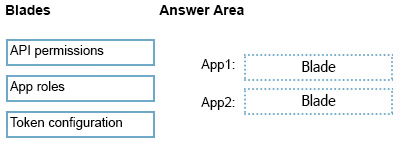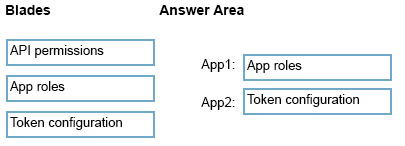DRAG DROP
-
You have two app registrations named App1 and App2 in Azure AD. App1 supports role-based access control (RBAC) and includes a role named Writer.
You need to ensure that when App2 authenticates to access App1, the tokens issued by Azure AD include the Writer role claim.
Which blade should you use to modify each app registration? To answer, drag the appropriate blades to the correct app registrations. Each blade may be used once, more than once, or not at all. You may need to drag the split bar between panes or scroll to view content.
NOTE: Each correct selection is worth one point.

